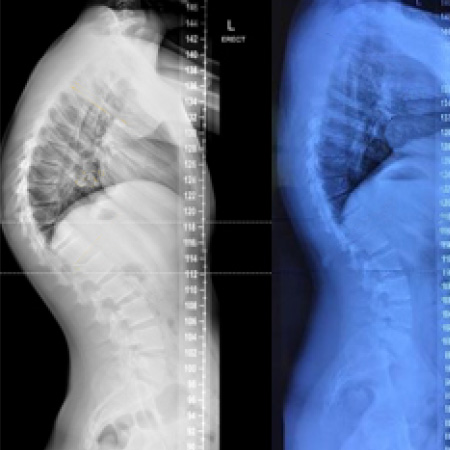What is Kyphosis?
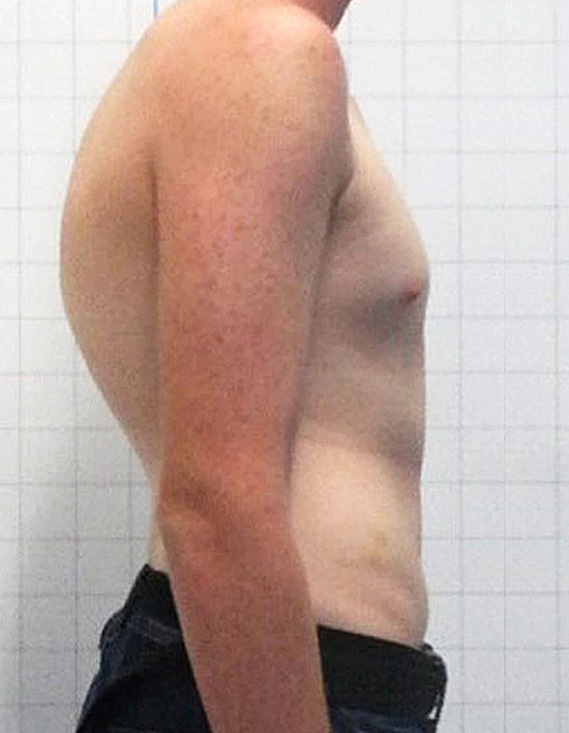
Hyperkyphosis (often commonly referred to as ‘kyphosis’) can be caused by functional problems such as poor posture, low muscle tone and pain. It can also be caused by structural problems such as a fracture of one of the vertebrae or when the vertebrae grow in a deformed manner (the back of the bone grows taller than the front of the bone creating a wedge shape). Sometimes multiple vertebrae develop a wedge shape and this creates a special condition called Scheuermann’s hyperkyphosis.
Depending on the cause, hyperkyphosis may be treated with a specific exercise program. If the kyphosis is large and/or stiff, a specialized kyphosis brace that is custom-made can stabilize and sometimes improve the kyphosis. In extreme cases, surgery may be recommended. We ensure each patient is expertly assessed and given the best options for care.
Hyperkyphosis Symptoms
Symptoms of hyperkyphosis may include:
- Poor posture with an obvious slouch or hunching appearance of the mid-back
- Consistent pain in the mid-back
- Tightness or stiffness in the mid-back
If left untreated, hyperkyphosis can worsen over time increasing symptoms and may become more difficult to treat.
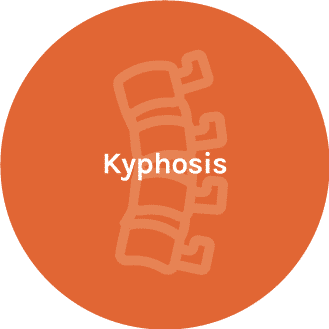
Causes of Hyperkyphosis
The causes of hyperkyphosis may include:
- Poor posture
- Uneven growth of the vertebrae causing a wedge (Scheuermann’s kyphosis)
- Low bone density (osteoporosis) causing compression fractures in the spine
- Spinal infections
- Neuromuscular conditions such as cerebral palsy
- Chronic diseases such as arthritis

Types of Hyperkyphosis
There are three main types of hyperkyphosis:
Postural Hyperkyphosis
Postural hyperkyphosis is the most common type of kyphosis which usually appears during adolescence. It is a functional type meaning it is not caused by a change to the structure of the boney elements of the spine. Poor posture and/or poor condition of the stabilizing muscles and ligaments of the spine cause postural hyperkyphosis. Usually, kyphosis specific exercise is the best way to treat postural hyperkyphosis however in cases where the spine is particularly stiff or where it is difficult for the patient to perform the exercises, kyphosis specific bracing may be used.
Scheuermann’s Hyperkyphosis
Scheuermann’s hyperkyphosis appears during adolescence and is a structural deformity of the vertebrae. True Scheuermann’s hyperkyphosis is diagnosed when multiple vertebrae (3 or more) develop a wedge shape. Sometimes the discs in between the wedge vertebrae show some signs of damage. A combination of both kyphosis specific bracing and kyphosis specific exercise is usually the best treatment.
Aging related Hyperkyphosis
As we age there is a natural tendency to develop a hyperkyphosis because gravity is always pulling us down. As muscles and ligaments become weaker, our ability to resist gravity is reduced. In cases where the bone density is low, the compressive force from the hyperkyphosis can cause the front of the vertebrae to collapse. This is a compression fracture and causes a wedge-shaped deformity of the vertebrae. The best way to treat age-related kyphosis is to maintain a good upright posture, and the strength to maintain that posture. Once upright posture is compromised, and a hyperkyphosis develops in an older person, it is important to actively treat the hyperkyphosis with kyphosis specific exercise and/or kyphosis specific bracing.
How Is Hyperkyphosis Treated?
We offer kyphosis specific exercise rehabilitation programs and custom-made kyphosis specific braces.
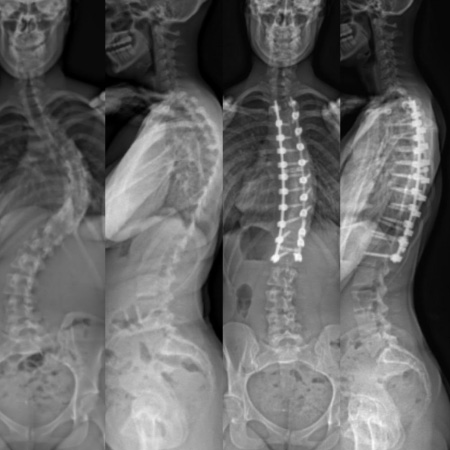
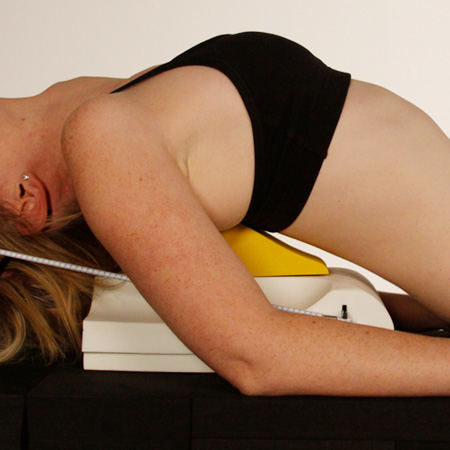
In adults, kyphosis bracing can be used to stabilise the posture if it is declining as a result of age. Kyphosis bracing can also be used to stabilise the spine following a compression fracture.
